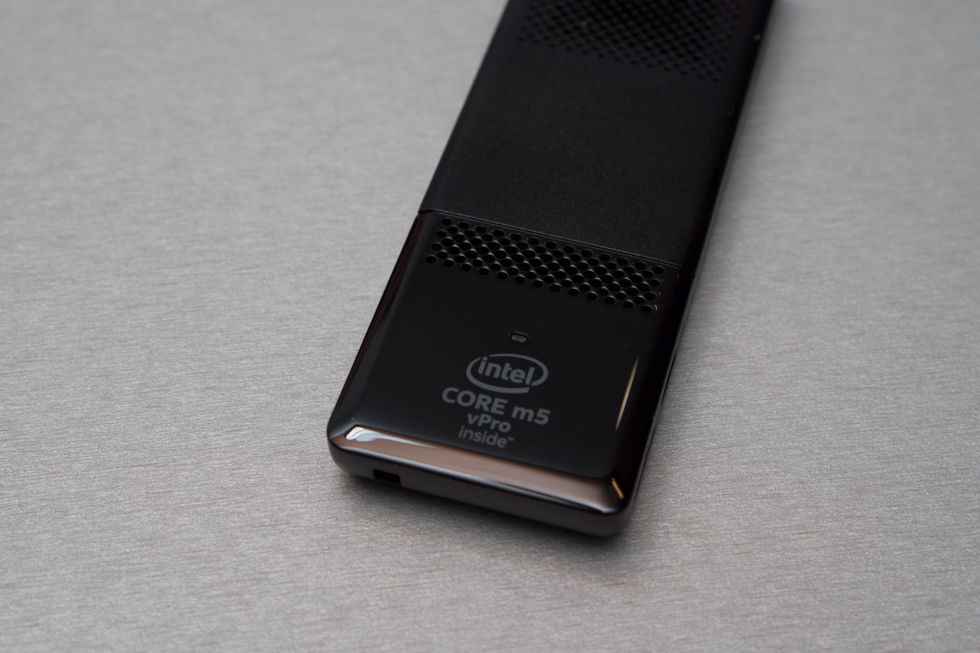Intel’s new Atom and Core M Compute Sticks get faster and look better
Intel’s original Compute Stick was a neat idea that ultimately wasn’t executed very well. Any system based on one of Intel’s Atom processors is going to be a little slow, but flaky wireless, inconsistent performance, and a clunky setup process all made it less appealing than it could have been. It had all of the hallmarks and rough edges of a first-generation product.
Today Intel showed us its next-generation Compute Sticks, and it’s clear that the company is taking seriously the criticism of the first model. There are three new versions to talk about: the lowest end stick uses a Cherry Trail Atom CPU and is the closest relative to the first-generation Compute Stick. The other two use more powerful Skylake Core M processors—one has a Core m3-6Y30 processor, and another has a Core m5-6Y57 CPU with Intel’s vPro management features enabled.
All three sticks share the same basic design. The first-generation stick used a bulky, glossy plastic housing that made it look and feel more like a reference design than an actual shipping product, but all three new models switch to a softer, curvier case that looks more refined.
Read 6 remaining paragraphs | Comments
Ars Technica
STRATEGIES FOR A COMPANY’S INTELLECTUAL PROPERTY. IP protection is a part of your business strategy and matches your commercial goals. A simple IP strategy is to protect your product and service by getting patent, trademark and copyright certificates.
U.S. COMPANY REGISTRATION. We help our foreign clients with registering U.S. business to support moving their innovations to U.S. market. We assist in navigating the process of setting up a new business and support while it grows.



